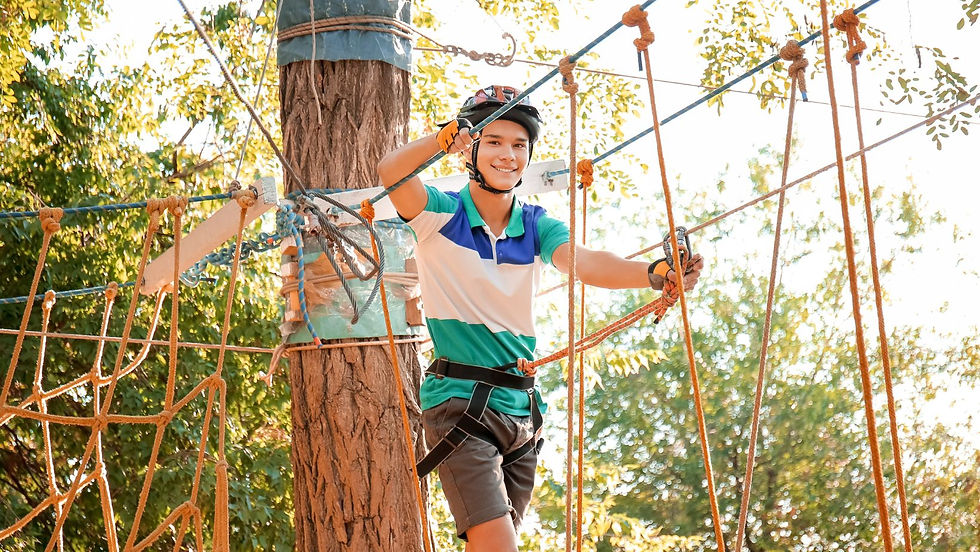Sunshine, Fresh Air, and Puddles: How Nature Impacts Our Moods
- Susan Warner
- Jul 18
- 2 min read

The past few years have been challenging—especially for young people—emotionally, socially, and mentally. As parents, we often wish for a quick fix or a one-size-fits-all solution. While there isn’t a magic cure, one simple and often overlooked way to support their well-being is by encouraging more time outdoors. In today’s screen-filled world, that’s no easy task—but nature is more than just refreshing; it’s a powerful ally for mental health.
“Fresh air, natural light, and green surroundings help calm the nervous system and quiet a busy mind.”

Why Getting Outside Helps
We’ve all felt it—just stepping outside can reset your mood. Time spent in nature has been shown to reduce stress, ease symptoms of depression and anxiety, and improve both focus and sleep. Fresh air, natural light, and green surroundings help calm the nervous system and quiet a busy mind.
Nature also provides a much-needed break from screens, academic stress, and social media. With the average screen time for kids at around six hours per day, even a short break can make a big difference. It doesn’t have to be complicated—a short walk, a few minutes in the sun, or simply cloud-watching can do wonders.
Nature as a Way to Reconnect
One of the biggest struggles young people face during emotional lows is isolation. Outdoor group activities can help them reconnect with peers, nature, and even themselves.
Here are a few simple, community-driven ideas that blend movement, nature, and social time:
Join a local hiking or nature club for teens
Sign up for a team sport or recreational league
Volunteer at a community garden or park clean-up
Participate in outdoor school clubs (like cross-country or environmental groups)
Try geocaching or group scavenger hunts
Invite friends for a group bike ride or frisbee at the park
These kinds of activities offer young people a sense of purpose, connection, and something meaningful to look forward to

Encouraging Teens to Get Outside—Without Nagging
Let’s face it—teens don’t always leap at the idea of spending time outdoors, especially if they’re in a slump. Try approaching it in ways that feel inviting, not obligatory:
Build on their interests – If they love music, bring a speaker outside. If they’re into photography or animals, use that as a springboard.
Make it collaborative – “Want to walk the dog with me?” works better than “Go outside.”
Offer options – “Would you rather go to the lake or the park this weekend?”
Let them lead – Ask them where they’d like to go or what they’d enjoy trying.

Where to Find Outdoor Activities
Local communities offer a range of outdoor activities year-round.
The Ryan Bartel Foundation’s FORT program offers camps and activities designed to engage middle and high school students in meaningful, healing experiences. The FORT has Camps and Activities throughout the summer.
Other helpful local resources include:
